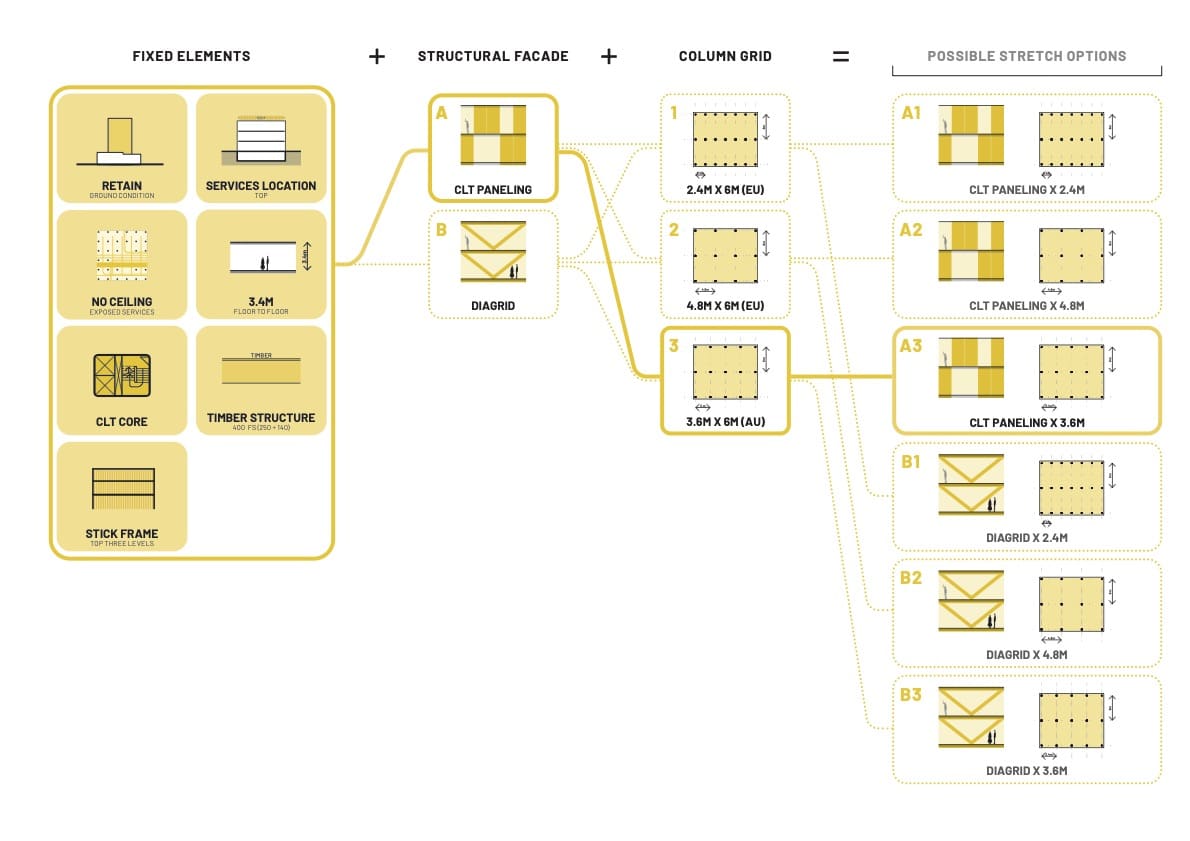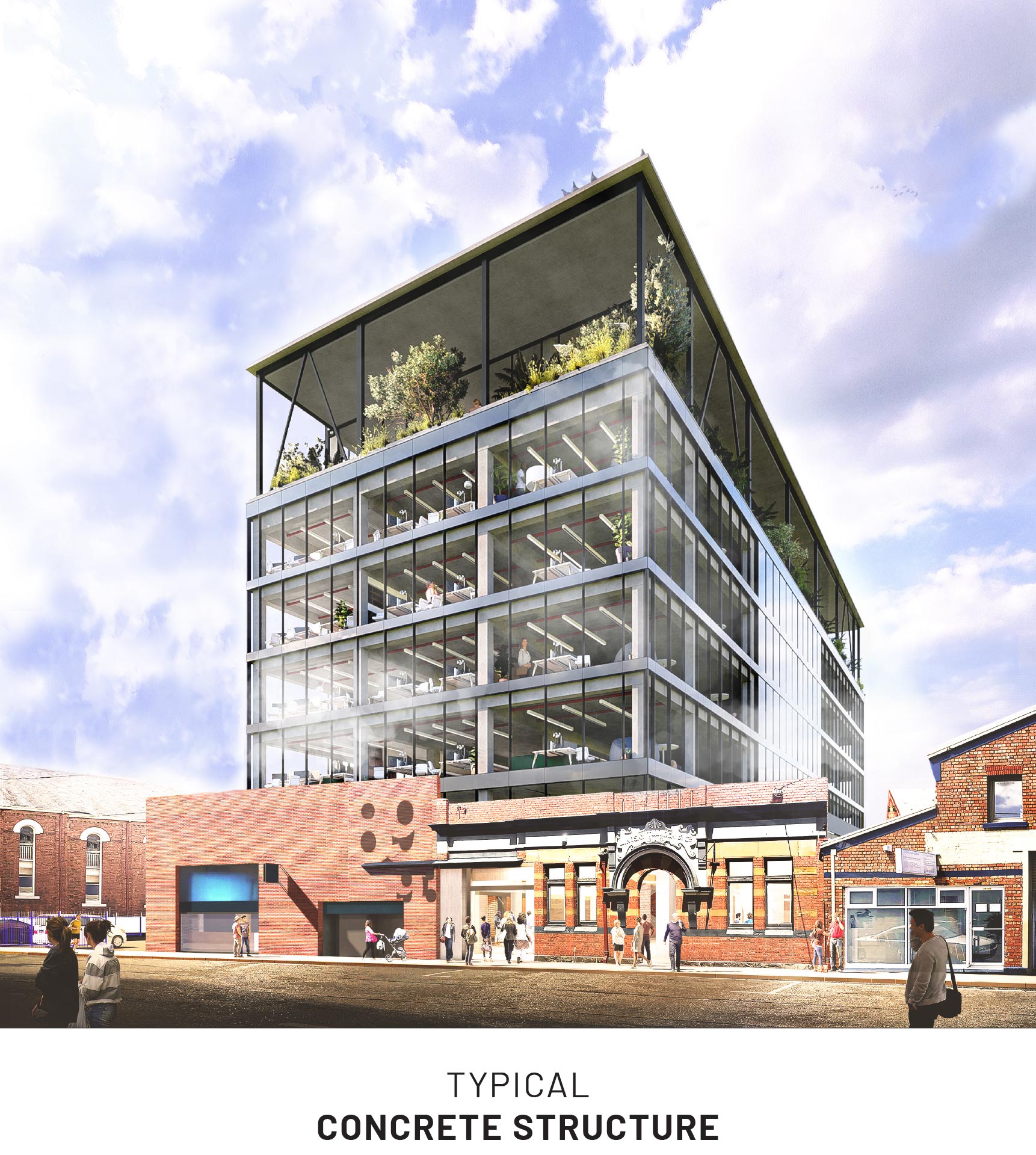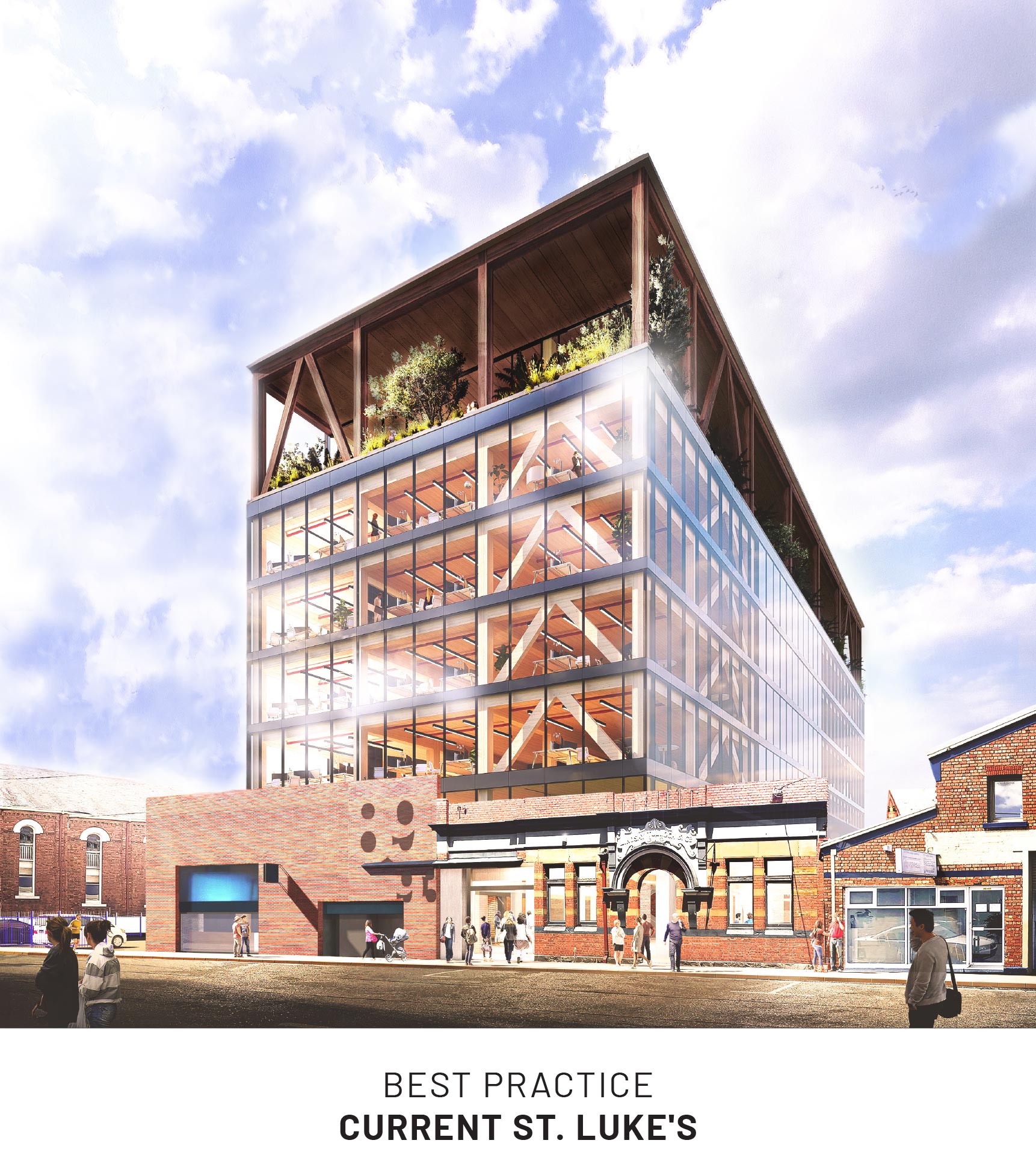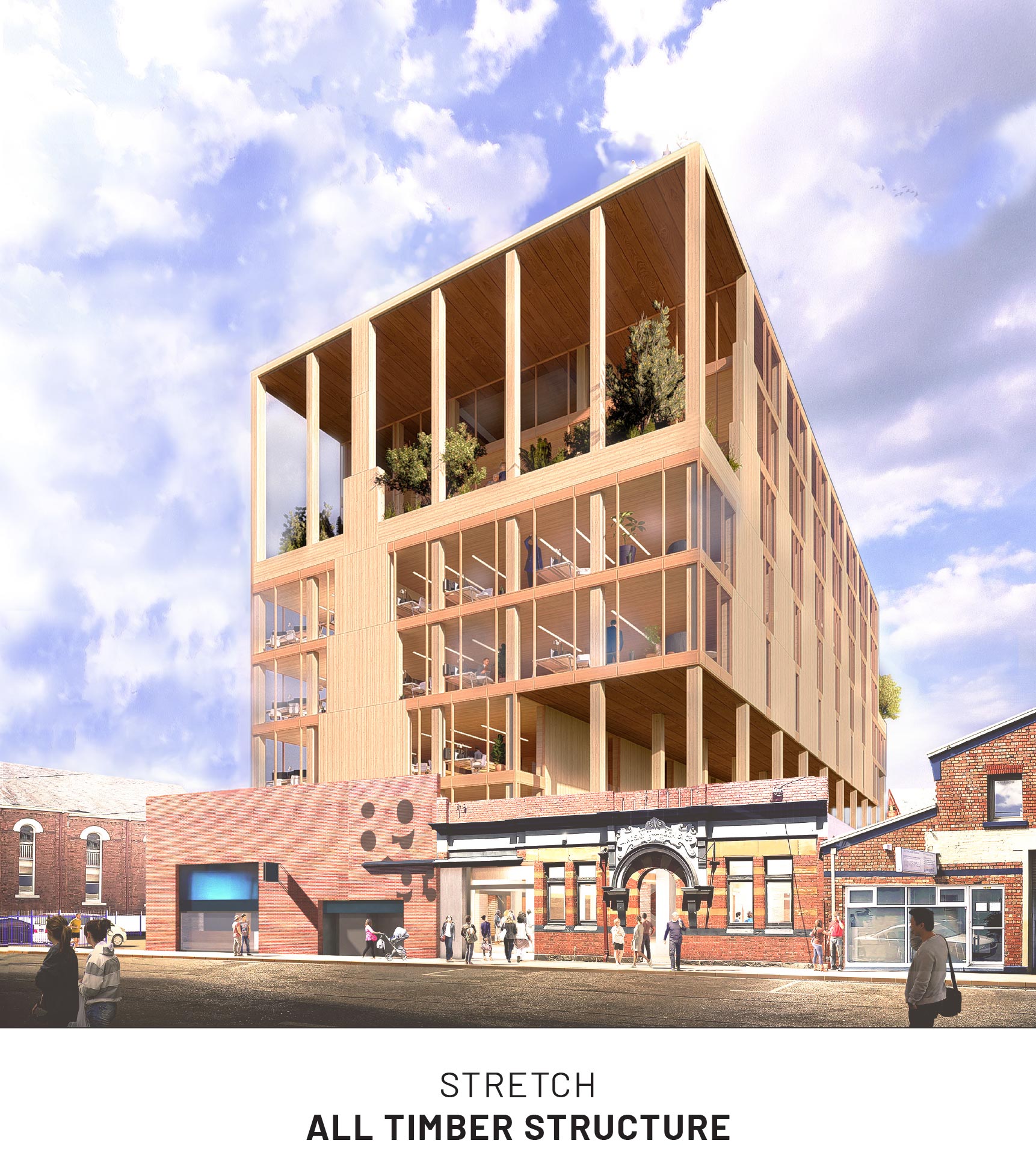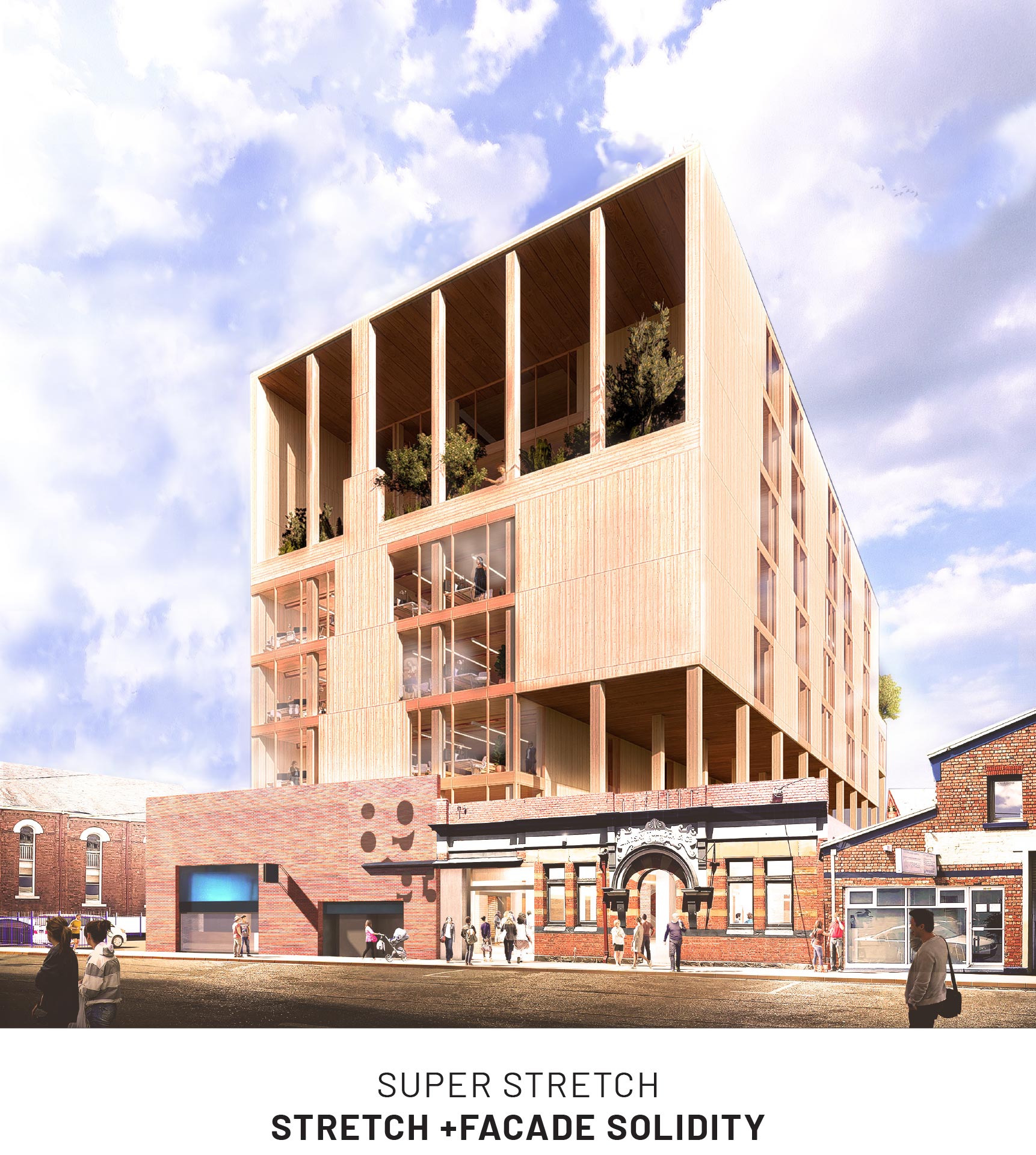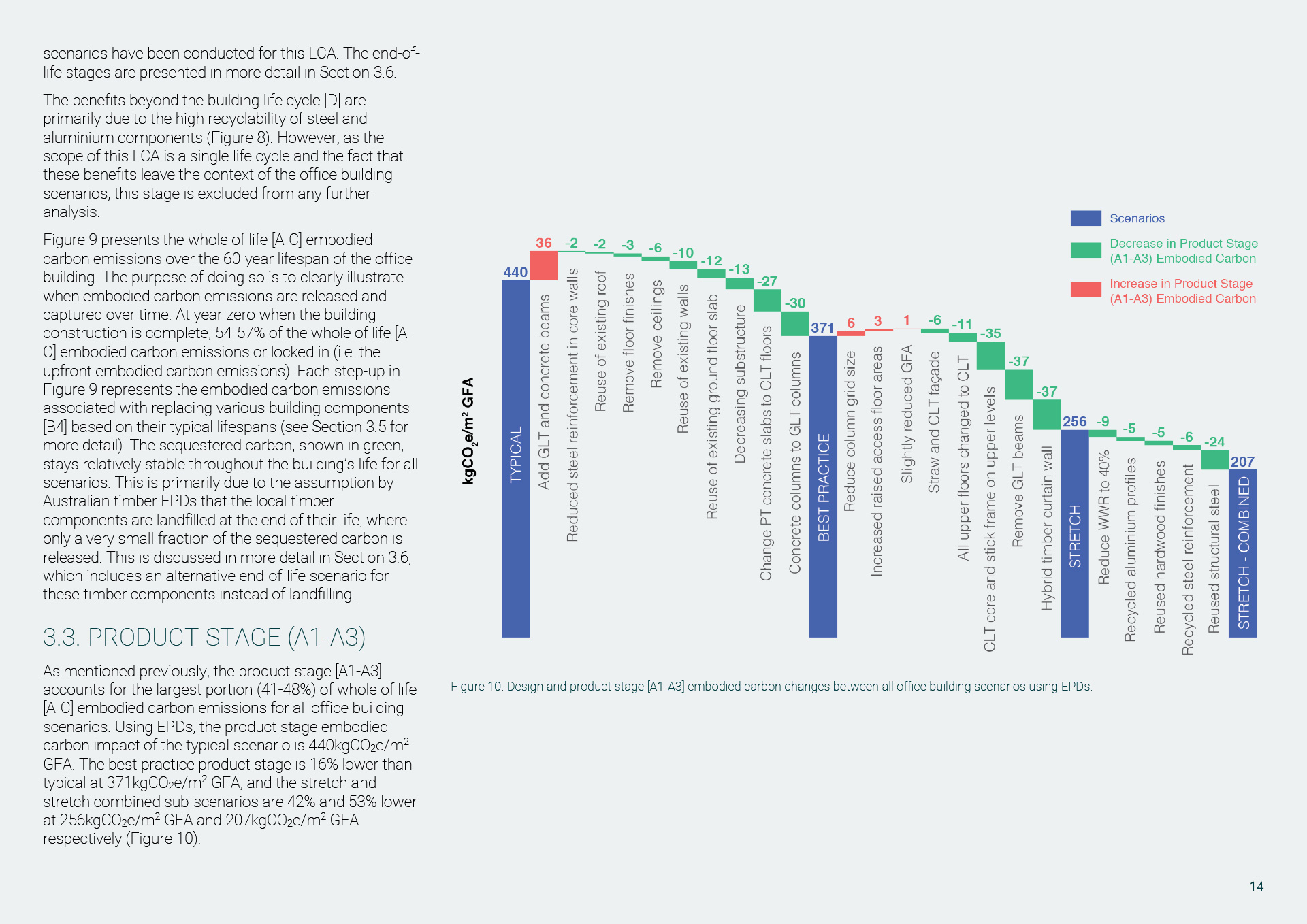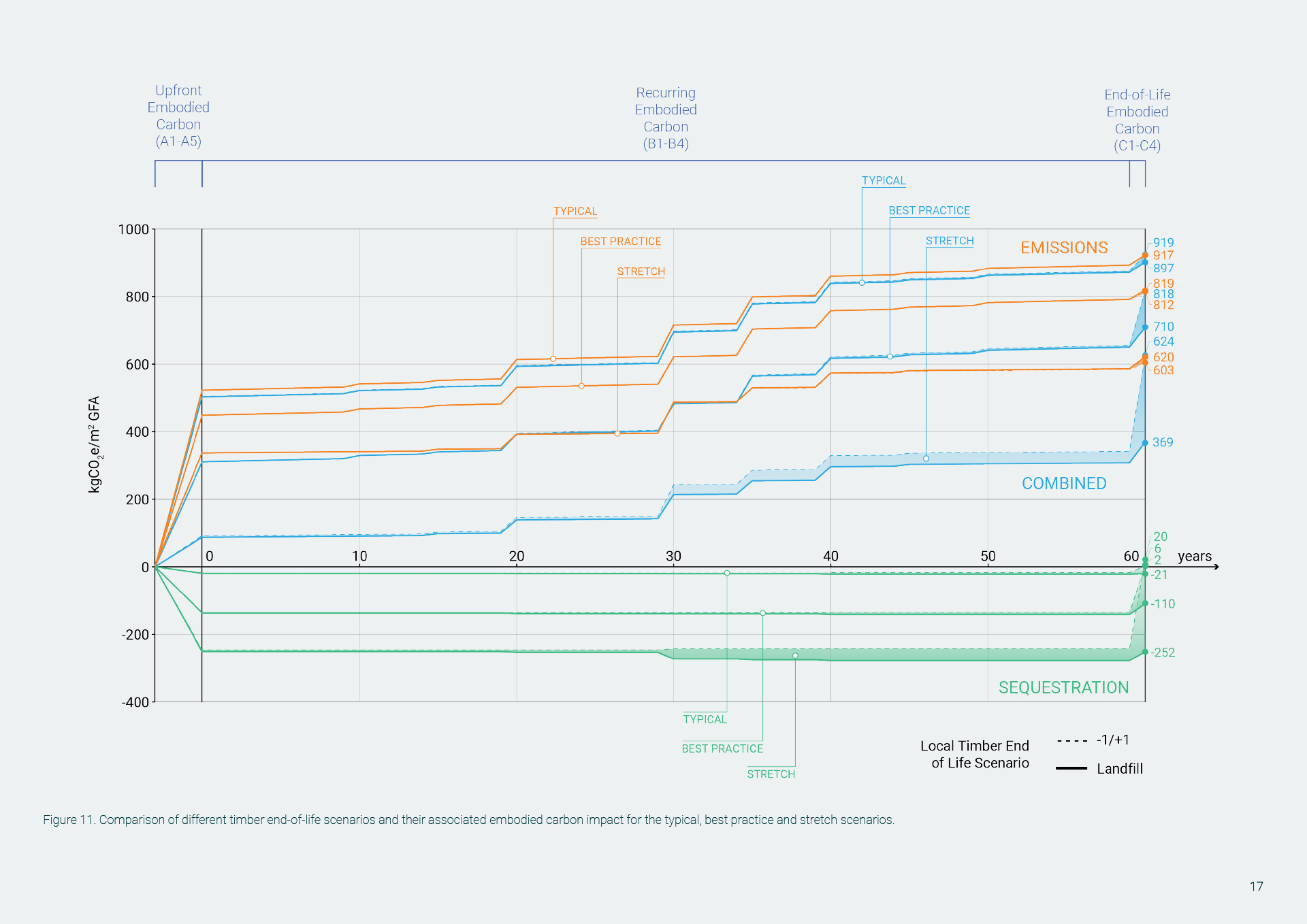Embodied Carbon: How low can we go?
This project was sparked by the imminent completion of our StLukes office building. The various strategies that we used to lower the carbon emissions – a CLT structure, an efficient floor plate and façade and the retention of existing buildings at the podium – represented the best of current practice. With this in mind, we started wondering – “how low could we go”? That is, with a lot of misinformation around embodied carbon, about carbon accounting (LCA) methodologies and about the base data to be entered into any calculating tool, we wanted to know what the StLukes carbon footprint was and how low one could get it using the tools and techniques we have now.
To answer this question, TERROIR commissioned Philip Oldfield and his team at NSW to engage in a collaborative research project that was also part-funded by the Australian Government’s Innovation Connections research program.
APPROACH
The research project commenced with a baseline Lifecycle Carbon Analysis of the current project. A series of scenarios were then added - a base case (conventional practice) and two "stretch" scenarios. Analysis of and between the various scenarios provided the key data upon which the report's conclusions were built.
To determine what the stretch scenarios were, we worked with our project team, the researchers from UNSW and Damian Hadley of Cantilever Engineers to clarify what the possible components of a stretch scenario might be and what impact they might have.
